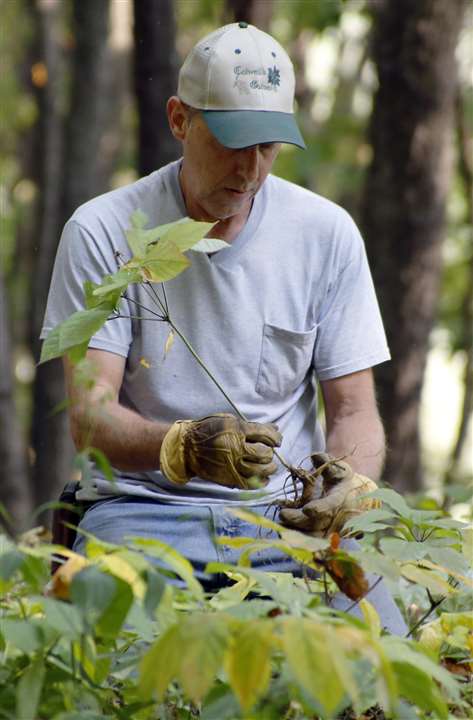Colwell’s Ginseng
Denny Colwell, Owner
New Bethlehem, PA. 16242
Phone: (814) 275-4710
[email protected]
.
FREQUENTLY ASKED QUESTIONS
American ginseng (Panax quinquefolius) contains adaptogenic natural occuring chemicals called ginsenosides. Ginsenosides seem to affect a variety issues ranging from insulin levels to infections such as colds and flu, & more. Other adaptogens, called polysaccharides, also help to balance the immune system.
Source: WebMD (Overview)
Both American ginseng (Panax quinquefolius) and Asian ginseng (Panax Ginseng) are believed to boost energy, lower blood sugar and cholesterol levels, reduce stress, promote relaxation. It is commonly touted for its antioxidant and anti-inflammatory effects. It could also have benefits for some cancers. What’s more, ginseng may strengthen the immune system, enhance brain function, fight fatigue and improve symptoms of erectile dysfunction.
Ginseng is used to help balance your body’s over all health by helping your immune system with health issues you might have.
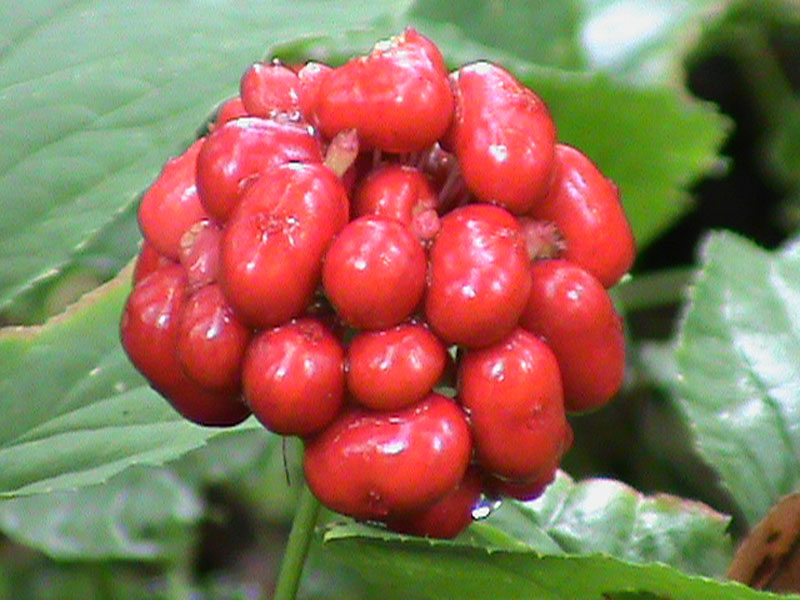 Ginseng Berry Benefits
Ginseng Berry Benefits
Studies show that most ginseng berry benefits are attributed to its high ginsenoside levels. Ginsenosides have been shown to be effective for treating a variety of medical conditions. Some include antidiabetic, anti-inflammatory, normalized blood glucose levels, lowering cholesterol levels, and antioxidative properties. In a recent study cited by the National Institutes of Health in 2021, ginseng berry concentrate was shown to help prevent colon cancer.
Another study suggests that an active agent in ginseng berries, called syringaresinol, possesses anti-aging qualities having the ability to stimulate longevity via gene activation.
It is also believed that various neurological functions occurs thanks to the interaction of ginseng berries’ constituents with the cholinergic and serotoninergic neurotransmitter systems.
Gensenosides
The Ginseng Berry is very High in Ginsenoside Content.
Given the berry’s high concentration of Rb3, Re, Rb2, and Rd, the ginsenosides has demonstrated antidepressant and neuroprotective effects. It could be expected that the berry has even a superior potential for mental health applications than the root.
These are but a few benefits mentioned in different studies. You can find more information by searching the web.
Here are a couple of links for but a few studies mentioned.
Colon Cancer study go to https://www.ncbi.nlm.nih.gov/pmc/articles/PMC8363175/
Blood Glucose Levels go to https://www.ncbi.nlm.nih.gov/pmc/articles/PMC2658891/
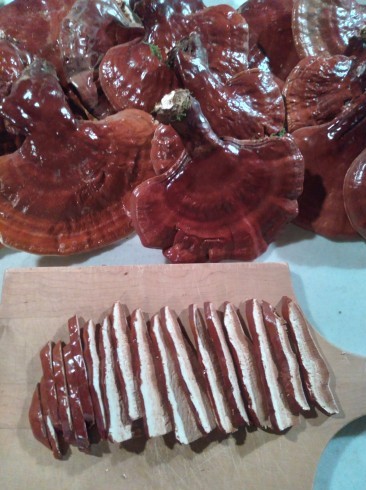
Reishi mushrooms offer a range of potential health benefits. Reishi may help support/boost the immune system, reduce inflammation, promote relaxation, improve sleep and manage stress and anxiety. Additionally, reishi mushrooms may promote heart health and offer antioxidant properties.
1. Boost the immune system
One of the most important effects of the reishi mushroom is that it can boost your immune system. (2Trusted Source).
Studies have shown that reishi can affect the genes in white blood cells, which are critical parts of your immune system.
What’s more, these studies have found that some forms of reishi may alter inflammation pathways in white blood cells. (3Trusted Source).
One study found that reishi could increase the number of other white blood cells in those with colorectal cancer. (4Trusted Source).
2. Anti-cancer properties
Several studies have shown that it can lead to the death of cancer cells.(10Trusted Source, 11Trusted Source, 12Trusted Source).
Some research has also investigated if reishi could be beneficial for prostate and colorectal cancer due to its effects on inflammation and certain pathways involved in cancer development. (13Trusted Source, 14, 15Trusted Source, 16Trusted Source).
One review indicated that reishi could benefit people with cancer when used alongside traditional treatments. This by increasing the activity of white blood cells and improving quality of life. (17Trusted Source).
3. Could reduce fatigue and depression
Though reishi’s effects on the immune system are often most emphasized, it may also reduce depression and fatigue.
One study examined its effects in 132 people with neurasthenia, a condition associated with aches, pains, dizziness, headaches, and irritability. (18Trusted Source).
The researchers found that fatigue was reduced and well-being was improved after 8 weeks of taking the supplements. (18Trusted Source).
Another study on people with breast cancer found that taking reishi reduced fatigue, anxiety, and depression and improved quality of life after 4 weeks.(19Trusted Source).
These are but a few benefits.
There are many other benefits you can read about and find by researching the web.
There are no new regs that I now of. You can read the full regulations on the PA DCNR website which is the regulatory body concerning ginseng for PA.
As I get more info, I’ll update the readers.
Diggers, sometimes it is hard to do. However, you are supposed to get permission from landowners before you look for or dig any ginseng. Without it, not only are you trespassing, you might be digging someone else’s crop and what does that make you?
To insure quality, you need to let that ginseng root grow for at least 8 years or longer. I prefer a 10-20 year span for optimum growth and quality. By law you are required to let any wild ginseng younger than 5 years old in the ground in the hope it will continue to propagate. As for the market, I don’t know of any ginseng dealer willing to purchase ginseng root that doesn’t have some age to it.
The easiest way is to look at the length of the neck (rhizome) as you harvest ginseng. If the neck is at least 1 inch or longer, you should have an 8 to 10 year old ginseng root. The longer the neck, the older the root. You can check the neck size by loosening the dirt around the neck, moving some soil from around the neck, till you see how long the neck is. You can do this without digging up the whole ginseng root so you don’t disturb all the fiber roots which helps to draw nutrients from the soil.
While there is a disease that attacks the neck (rhizoctonia) you can also control the age in some cases by the size of root as well as the amount of growth rings on the root. If conditions are good, the root needs to be at least the diameter of your biggest finger with a lot of growth rings.
If you can’t judge by these 2 methods, ask someone in the know or just leave it in the ground. Most buyers don’t want small stick root.
Wild Simulated Ginseng Planting Information
For a more complete guide to growing ginseng we built a page of information on ginseng seed and ginseng rootlet planting instructions.
For info on planting wild simulated ginseng seed and ginseng rootlets please go to https://www.colwellsginseng.com/planting-growing-ginseng/
Ginseng seed planting rates vary greatly depending on the growing method. Rates of 20-100 lb of seed per acre are not uncommon. The thicker you plant ginseng, in theory the thicker or more ginseng plants you will have.
However, the thicker you plant the greater the risk you’ll have for disease to become problematic. To keep disease to a minimum, you should try to keep your ginseng plantings to about 2-4 plants per sq ft. To achieve this you will need to plant 4-6 ginseng seed per sq ft. The average lb of ginseng seed contains approx. 6000 – 7000 seed. Planting 1 lb of ginseng seed to about 1200 – 1600 sq ft should give you about 4 – 6 seed per sq ft. At this rate it will take about 25 to 40 lb of ginseng seeds to plant approx. 1 acre. Also , while this practice will not in itself keep disease away, it has proven to be beneficial in the desire to keep disease @ bay.
For a novice grower, I recommend smaller rates. It all depends on how much work you want to put forth to keep the plants healthy. The thinner you plant your ginseng, as well as having the right ginseng growing environment, the better chance you have of being disease free.
For more planting info for ginseng seed go to https://www.colwellsginseng.com/planting-info/
For a planting video on seed go to https://www.colwellsginseng.com/ginseng-videos/
Here again, with conditions right, transplanting 2-4 ginseng rootlets per square foot is fine, yet it can still get diseased. Good drainage is critical to ensure healthy ginseng plants. Plan on preparing your ginseng planting area in the spring thru summer before planting in the fall.
PLANTING:
Transplant your rootlets at a slight angle in the trough you made that is about 3 to 4 inches deep. Keep the bud about an inch below the top so you get at least an inch of soil covering the bud.
Space your rootlets about 12 inches apart in your rows with each row about 12 – 18 inches apart. This should give you a rootlet about 12 or more inches apart in every direction.
For novice growers we recommend a rate of 2-3 ginseng rootlets per square foot. Also be sure to have a couple inches of mulch on top so the weather packs it down to about an inch. Yes, you can have to much mulch to where it will choke your ginseng out. Especially younger plants and new plants from seed will have a hard time breaking thru a thicker mulch. That is also a reason why I recommend small leaved soft hardwoods for planting under. Cherry, ash, maple, birch, etc. Trees that the leaves will break down and feed the soil within a couple of years. I also try and stay away from any nut tree. Remember, you are trying to copy what mother nature does.
For more planting info for rootlets go to https://www.colwellsginseng.com/planting-info/
To watch a video on transplanting rootlets check out are video at https://www.colwellsginseng.com/ginseng-videos/
There are sites on the web with information on the different diseases, how to recognize them & what to do for them. You have to do your homework.
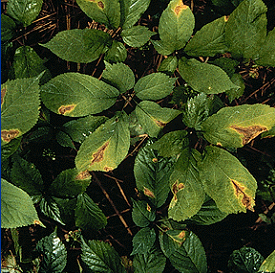 There are also ginseng growers who will help other growers with disease problems. Alternaria Leaf Blight is one & probably the most common. Symptoms, The fungus causes an elongated brown lesion on the stem, which becomes velvety with spores as the disease progresses. Stems may become weakend by the lesion, which causes the top of the plant to wilt or topple over. Leaves will usually show the first sign of infection as you see in this picture.
There are also ginseng growers who will help other growers with disease problems. Alternaria Leaf Blight is one & probably the most common. Symptoms, The fungus causes an elongated brown lesion on the stem, which becomes velvety with spores as the disease progresses. Stems may become weakend by the lesion, which causes the top of the plant to wilt or topple over. Leaves will usually show the first sign of infection as you see in this picture.
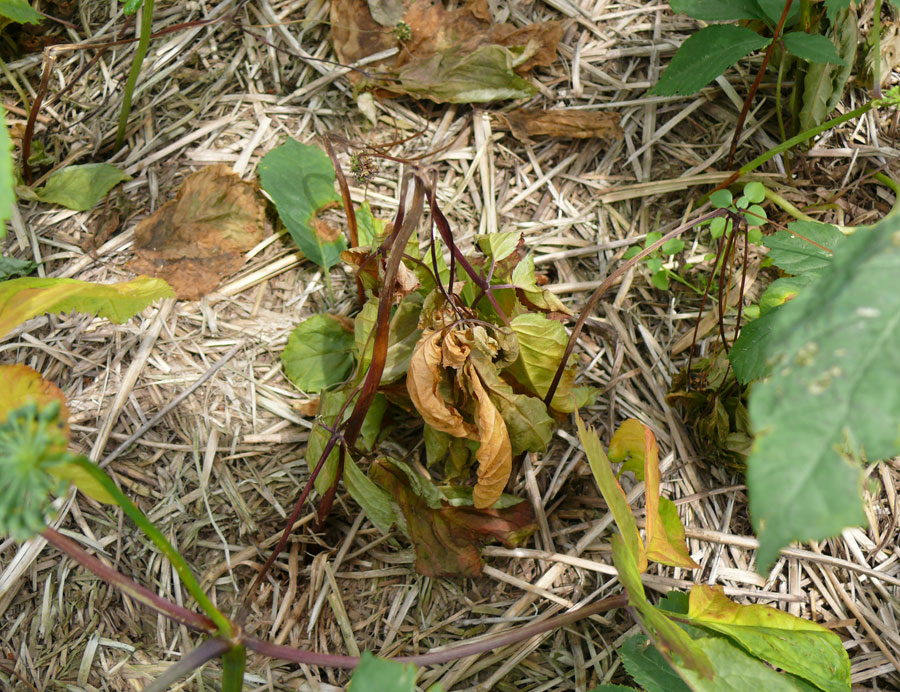 Another is Phytophthora stem and leaf blight.
Another is Phytophthora stem and leaf blight.
Another, Phytophthora Root Rot.
Phytophthora is the hardest to recognize and hardest to cure. Most of the time you don’t.
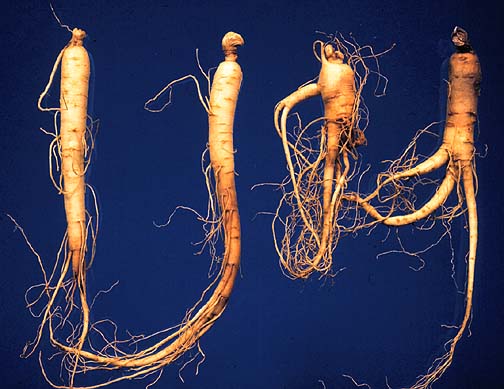
There are still others such as Rusty Root, Botrytis Blight, Rhizoctonia, which also causes damping off and crown rot, Fusaruim, and I am sure some I don’t know about. As stated before , you must do your research. Preventive measures taken is the best way to stop any disease. Get it before it starts!
Yes Deer will eat ginseng plants as well as the berries that produce the seed.
Turkey will not only eat the berries, they will scratch the young root to the surface which then dries out and dies. There scratching will also take the rhizome aka neck, off older root. This will cause the root to not grow till it produces a new bud after a year or two, or die all together.
Then there are the mice that eat the seed and root, the chipmunk that runs off with and eats the seed. The voles and moles and any other rodent you can think of that will do some sort of damage. Slugs, bugs, and even skunks will do some damage. There is always something or some kind of pest to look for and worry about when growing ginseng.
One of the top three worse varmints if not the worse, next to deer and turkey, are the Human Thieves!!!!! And probably the hardest to stop.

